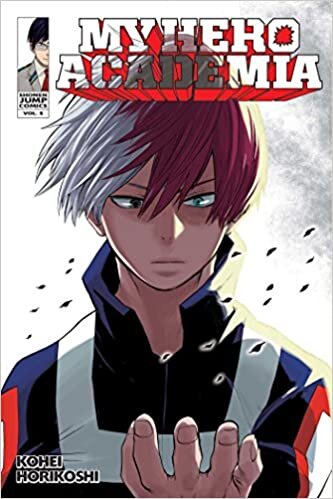My Hero Academia Volume 5: “Shoto Todoroki: Origin” (Chapters 36 through 44) Manga Review
Major Spoilers are included in this manga review. Please read with caution.
On July 25, 2020, I started and finished reading My Hero Academia’s Volume 5.
Synopsis: Written and drawn by Kohei Horikoshi, the main series follows Izuku Midoriya—nicknamed Deku—and his dream to become a hero someday. In a world where 80% of the superhuman society had powers—dubbed Quirks in this series—the dream to become a superhero became way more common. Sadly enough, Deku fell into the 20% category, effectively making him average—or Quirkless. After a fateful encounter with the number one hero All Might though, Deku’s fate changes forever.
Volume 5: “Shoto Todoroki: Origin” picked up with the one-on-one tournament that will determine the strongest first-year student. Starting with Bakugo vs Uraraka was an interesting—and explosive—tactic that subverted the audience’s expectations. While everyone in the stands—classmates included—was booing Bakugo for “being too harsh” on a frail little girl, Bakugo declared, “there was nothing frail about her” and treated Uraraka as a worthy opponent regardless of her gender. Uraraka gave it everything she had in this fight, throwing the audience off with her ultimate attack. Uraraka’s need to prove herself was a worthy motive that earned her Bakugo’s respect… because he now remembered her name instead of simply calling her “round face”.
While Uraraka had more character development—beautiful heartfelt moments—in the beginning and the ending of this volume, the volume was obviously more centered around—based on the volume’s title—Shoto Todoroki and his origin story.
The fight between Midoriya and Todoroki—both successors of the number 1 All Might and number 2 hero Endeavor respectively—showed us a clash on what it means to be a hero and the impact it had on the boys moving forward. Midoriya’s creative workaround to avoid One for All breaking his bones—one finger blasts instead of his whole arm—was visibly painful and a strong display of how far he’ll go to prove himself without breaking himself all at once.
Todoroki left the battle feeling lost and unsure of the path he wants to take—and the conflicted feelings he has for both his parents. Midoriya, on the other hand, learned he needed a better way to control One for All, and why he was chosen by All Might to be his successor despite being born Quirkless. He also prioritized saving Todoroki’s soul over winning the match, which made Todoroki reevaluate what it means to be a hero.
Kohei Horikoshi’s ability to weave heartfelt moments into the action sequences without slowing down the pacing or the fights is truly outstanding. The flow of the fight scenes in this volume—in all of My Hero Academia thus far—was flawless and were real page-turners.
Unlike Naruto where fight scenes abruptly stop so the characters can have a chat or have flashbacks, My Hero Academia keeps the momentum going somehow with the emotional heartfelt moments adding to that fast pace as oppose to hindering it. I wasn’t full-blown crying, but I did drop a few small tears for Midoriya and Todoroki.
Overall, the “U.A. Sports Festival Arc” concluded in this volume in a satisfying way while also setting up the next arc with Tenya Iida for volume 6. Thanks for reading my manga review, everyone! Now say it with me, “Let’s keep it reading—PLUS ULTRA!”


